Digital Poster
Blood Vessels II: Vessel Wall Imaging & Angiography
ISMRM & ISMRT Annual Meeting & Exhibition • 10-15 May 2025 • Honolulu, Hawai'i

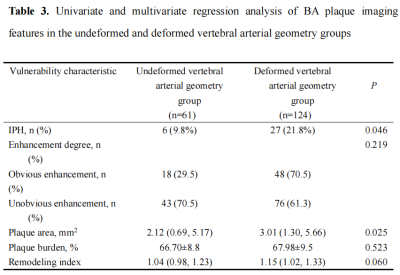 |
Computer Number: 97
1913. Vertebral
artery deformation is associated with basilar artery plaque
vulnerability on high-resolution vessel wall imaging
L. Mei, J. Lyu, J. Xiong, C. Zhang, X. Qu, J. Xia
Second Hospital of Dalian Medical University, Dalian, China
Impact:
Geometric deformation of the vertebral artery is an independent factor affecting vulnerable atherosclerotic plaque formation in the basilar artery, providing an imaging basis for early clinical intervention in treating basilar atherosclerotic plaques and preventing post-circulation stroke. |
|
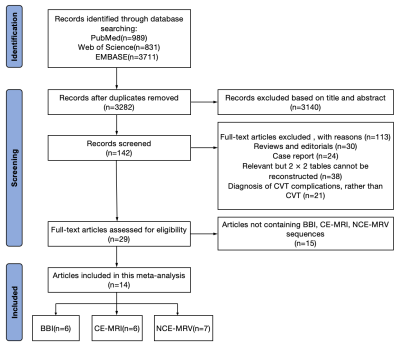 |
Computer Number: 98
1914. Comparison
of CE-MRI, Non-contrast-enhanced MRV and Black Blood Imaging in
the diagnosis of Cerebral Vein Thrombosis:A Meta-Analysis
H. Li, M. Hou, Y. Jiao, W. Chen
Tongji Hospital of Tongji Medical College of Huazhong University of Science and Technology, Wuhan, China
Impact: BBI exhibits the utmost accuracy in diagnosing
CVT when compared to NCE-MRV and CE-MRI, poised to become a
frontline diagnostic tool. While NCE-MRV surpasses CE-MRI in
CVT detection sensitivity, it lags slightly in excluding
non-CVT cases.
|
|
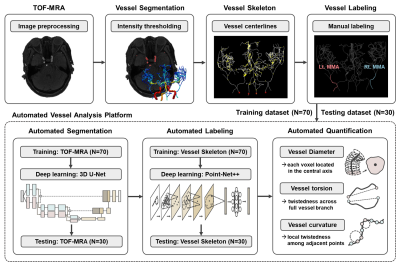 |
Computer Number: 99
1915. Development
of Automated Vessel Analysis Platform for Middle Meningeal
Artery Based on Magnetic Resonance Angiography
P-H Kuo, S-P Chen, C-H Wu, J-F Lirng, S-J Wang, C-F Lu
National Yang Ming Chiao Tung University, Taipei, Taiwan
Impact: This study developed an automated vessel
analysis platform capable of segmenting, labeling, and
quantifying middle meningeal arteries (MMA) and offered
insights into future applications in the diagnosis and
treatment of MMA-related diseases.
|
|
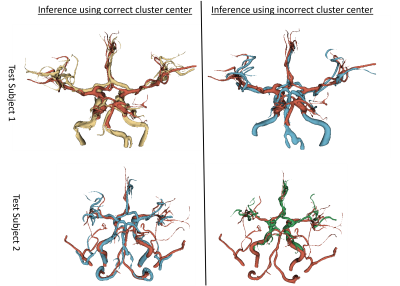 |
Computer Number: 100
1916. Hierarchical
Atlas Organization and Inference for MRA-free Full Intracranial
Vessel Geometry Mapping
E. Nguyen, J. Xiao, Z. Fan, D. Ruan
University of California Los Angeles, Los Angeles, United States
Impact: By organizing atlas with clustering, our
approach provides a stable approach to infer vessel from VWI
alone, mainlining the intrinsic consistency. This progress
would simplify and expedite VWI protocol, and improve
consistency.
|
|
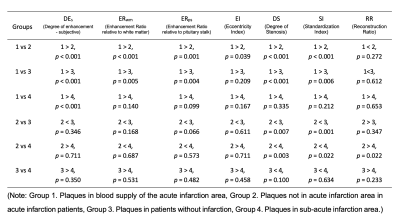 |
Computer Number: 101
1917. Assessment
of the characteristics of intracranial atherosclerotic plaques
in various disease states with high-resolution vessel wall MRI
K. Xu, J. Qiu, H. Jin, W. Li, J. Lian, Y. Huang, Y. Zhao
Peking University First Hospital, Beijing, China
Impact: HR-VWI is a promising tool in observing the
characteristics of intracranial atherosclerotic plaques,
which might reflect the status of the plaques and predict
the development of the disease. It might improve clinical
surveillance and management of cerebrovascular disease
patients.
|
|
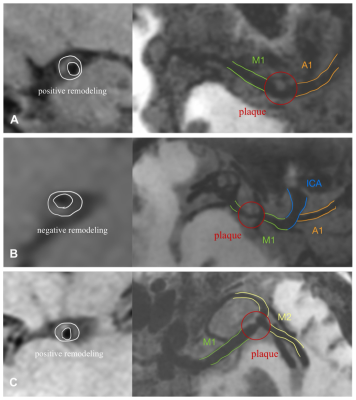 |
Computer Number: 102
1918. Plaque
location correlates with vessel wall remodeling in intracranial
atherosclerosis
Y. Liu
Guangdong Provincial People's Hospital , Guangzhou, China
Impact: The location of plaques is associated with
different pattern of vessel wall remodeling, suggesting that
the position of plaques may play a role in the
pathophysiological process of vessel wall remodeling. The
mechanism of vessel wall remodeling merits further
investigation.
|
|
 |
Computer Number: 103
1919. Advancing
3T Vessel Wall Imaging through Combined Deep Learning
Acceleration and Reconstruction for Rapid, High-Resolution Scans
X. Zhang, Y. Zhang, M. Liu, H. You, M. Li, F. Feng
Peking Union Medical College Hospital, Chinese Academy of Medical Sciences and Peking Union Medical College, Beijing, China
Impact: This
study demonstrates the feasibility of combining two DL
techniques for rapid and high-resolution vessel wall
imaging, offering unprecedented quality and speed at 3T.
This approach also provides insights for applying DL methods
in other challenging imaging sequences.
|
|
 |
Computer Number: 104
1920. Comparison
of MR Venography and Perivascular Space at 3.0T and 5.0T
J. Wang, R. Tang, Y. Wang
United Imaging Healthcare Group, Shanghai, China
Impact: 5-T high-resolution SWI offers a potential
alternative for the clinical assessment of cerebral small
vessel diseases.
|
|
 |
Computer Number: 105
1921. White
matter hyperintensity iron overload mediates glymphatic system
dysfunction and cognitive impairment in cerebral small vessel
disease
Y. Qiu, Y. Sun, Y. Zhou
Ren Ji Hospital Affiliated to Shanghai Jiao Tong University School of Medicine, Shanghai, China
Impact: Noninvasively, this study found WMH iron
overload as a potential mediator in the relationship between
glymphatic system dysfunction and cognitive impairment in
CSVD, offering new insights for elucidating the pathological
mechanisms underneath.
|
|
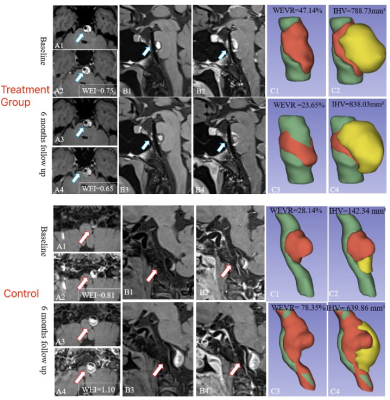 |
Computer Number: 106
1922. A
randomized controlled trial of statins to reduce inflammation in
vertebrobasilar dissecting aneurysms (VBDAs) using vessel wall
MRI
C. Zhu, C. Wang, D. Tian, B. Sui, M. Mossa-basha, X. Yang,
Y. Zhang
University of Washington, Seattle, United States
Impact: Our results suggest VWI-MRI has great potential
in future image-guided clinical trials to investigate novel
treatment of VBDAs.
|
|
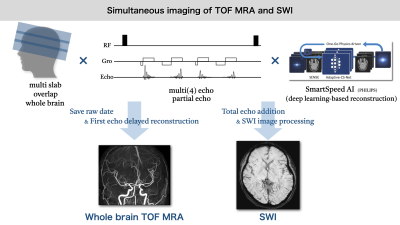 |
Computer Number: 107
1923. Simultaneous
TOF MRA and SWI Imaging using a Multi-echo GRE Sequence and
Image Quality Improvement using Deep Learning-based
Reconstruction
I. Nakanishi, H. Yokota, T. Sada, R. Kurosawa, K. Nitta, H.
Sato, K. Matsumoto, T. Namiki, M. Yoneyama, T. Iimori, T.
Uno
Department of Legal Medicine, Graduate School of Medicine, Chiba University, Chiba city, Japan
Impact: The proposed method enables simultaneous TOF MRA
and SWI imaging with clinically acceptable image quality,
reduces scan time, and prevents misregistration. This allows
us to obtain arterial and venous information in a shorter
time.
|
|
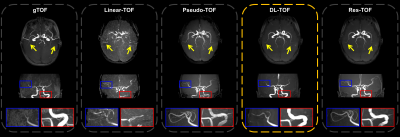 |
Computer Number: 108
1924. Deep
Learning-Based TOF-MRA Generation Using a Single mGRE Sequence
for Enhanced Peripheral and Large Vessel Visualization: A
Feasibility Study
S. Y. Seo, K-J Jung, D. Kim, D. Kim, D-H Kim
Yonsei University, Seoul, Korea, Republic of
Impact: This study utilizes the inflow and
susceptibility information inherent in mGRE to generate
enhanced TOF images that visualize both veins and arteries
through a deep learning generative model, advancing vascular
imaging without additional TOF-MRA scans.
|
|
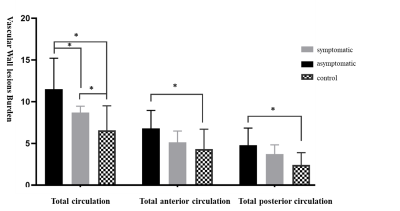 |
Computer Number: 109
1925. Detection
Of Intracranial Vessel Wall Lesions In Patients With Diabetes
Using 7 T Magnetic Resonance Imaging
W. Wang, J. Lv, Q. Duan, X. Zhang, R. Li, M. Liang, J. Qu,
X. Lou
Chinese PLA General Hospital, Beijing, China
Impact: Vessel wall lesion burden in diabetes may
significantly increase the risk of cerebrovascular events.
Future studies in diabetes will help to clarify the
mechanisms by which vascular wall burden affects IS, thereby
providing more effective imaging predictive indicators of
IS.
|
|
 |
Computer Number: 110
1926. Predictive
Value of Plaque Enhancement Ratio for Stroke Occurrence on 5.0T
HR-VWI
Y. Zhu, Y. Tang, R. Ling, X. Xue, J. Wang, Z. Qin
Shanghai Sixth People's Hospital Affiliated to Shanghai Jiao Tong University School of Medicine, Shanghai, China
Impact:
This finding provides valuable insights for early identification and risk assessment of high-risk stroke patients, supporting more timely and targeted preventive measures to reduce stroke incidence. Further studies with larger sample sizes are warranted to confirm and refine these findings.
|
|
 |
Computer Number: 111
1927. The
feasibility of 4D-flow MRI in evaluating patients with ischemic
stroke by comparing with healthy controls
D. Zhang, H. Qin, Z. Li, C. Jiang, J. Zhao
The First Affiliated Hospital, Sun Yat-sen University, GuangZhou, China
Impact: 4D-Flow MRI has great potential in the
assessment of cerebral hemodynamics in healthy individuals
and ischemic stroke patients and may provide new markers for
clinical work.
|
|
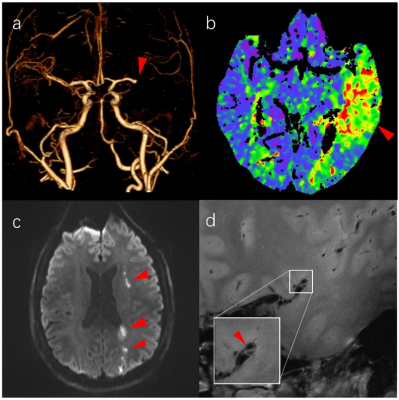 |
Computer Number: 112
1928. Longitudinal
7T MRI Vessel Wall Imaging in Middle Cerebral Artery Dissection:
A 210-Day Case Study
Z. Zhen, Y-C Hsu, Y-H Chu, W. Chen
7T Magnetic Resonance Imaging Translational Medical Center, Department of Radiology, Southwest Hospital, Third Military Medical University (Army Medical University), Chongqing, China
Impact: This study demonstrates the potential of 7T
HRVWI for capturing long-term vessel wall changes in MCAD,
providing critical insights into disease progression and
markers for treatment response, which could enhance
diagnostic and prognostic strategies in cerebrovascular
care.
|
The International Society for Magnetic Resonance in Medicine is accredited by the Accreditation Council for Continuing Medical Education to provide continuing medical education for physicians.